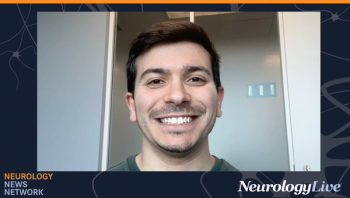
Cognitive and Behavioral Involvement in ALS May Be Distinct Phenotype
Those who had crossovers of ALS and frontotemporal dementia had structural and functional resemblance to the patterns of damage of those with only behavioral variant frontotemporal dementia.
Although previous literature has shown overlaps between amyotrophic lateral sclerosis (ALS) and frontotemporal dementia (FTD), the possible cognitive and/or behavioral involvement of FTD may be its own phenotype and not a product of disease worsening, according to new results from a multiparametric study.
All told, those with ALS with cognitive and or/behavioral involvement (ALS-ci/bi) showed a rearrangement of the functional networks, which was divergent from those with solely motor deficits (ALS-cn), with the enhanced functional connectivity within motor areas and decreased connectivity in the frontotemporal networks. The concomitant absence of significant structural alterations, compared with the ALS-cn group, supported a maladaptive role of such functional rearrangements in ALS-ci/bi, which had been previously hypothesized.
Senior author Federica Agosta, PhD, Neurodegenerative Diseases Unit, IRCCS Ospedale San Raffaele University, and colleagues, collected data on 83 patients with ALS, 35 patients with behavioral variant frontotemporal dementia (bvFTD), and 61 healthy controls. Using the revised Strong criteria, patients with ALS were classified as ALS-cn (n = 54), ALS-ci/bi (n = 21), or having crossover with FTD (ALS-FTD; n = 8).
After assessing functional and structural connectivity patterns, investigators evaluated whether and where MRI connectivity alterations of patients with ALS with cognitive impairment resembled alterations of those with any degree of cognitive impairment, either ALS-ci/bi and ALS-FTD, resembled more the pattern of damage (ALS-cn), or on the other end of the spectrum (bvFTD).
READ MORE:
At the end of the regional connectivity analysis, the data showed alterations involving the connections within and among the sensorimotor network, basal ganglia, frontal, temporal and parietal areas, in additional to minimal involvement of the occipital connections, in patients with ALS-cn compared with controls (P = .01). This structural pattern of damage was observed in ALS-ci/bi and ALS-FTD cases relative to controls (P = .02 and P = .01, respectively), with a more widespread disruption of the same networks in ALS-FTD, which reflected increased severity of impaired behavior and cognition.
Those with ALS-FTD had a more severe structural damage, mainly within frontal areas, relatively to those with ALS-cn (P = .01). Additionally, those classified as ALS-cn had greater structural alterations relative to bvFTD (P = .03) in a few connections within and among sensorimotor regions, parietal areas, and basal ganglia, especially involving thalamus and those connections from pallidum and putamen towards precentral, postcentral and precuneus bilaterally.
Distribution analysis showed greater structural intra-area disruption within frontal, temporal, and parietal areas in patients with bvFTD compared to those with ALS-cn (P <.05). These patients also showed similar disruptions in the frontal, temporal, and occipital connections toward parietal lobe (P = .01), in the frontal, basal ganglia, and occipital connections toward temporal areas (P = .002; P <.001; and P = .03, respectively), and in the connections between frontal and basal ganglia (P <.001). Ranging from 83% to 100%, most of patients with bvFTD were found severely disrupted in these networks.
Additional results on the distribution analysis indicated that most patients with ALS-cn-like patterns (81%) were characterized by a greater damage within the motor network, specifically among the sensorimotor– basal ganglia connections, relative to bvFTD cases (P = .01). Patients with ALS-FTD also showed structural connectivity within the motor areas that resembled ALS-cn damage, with 88% of those with ALS-FTD revealing significant structural disruption in the sensorimotor-basal ganglia connections compared to bvFTD cases (P = .01).
Cases of ALS-ci/bi and ALS-FTD had ALS-cn-like patterns more frequently identified compared to patients with bvFT (ALS-ci/bi vs bvFTD: P = .04; ALS-FTD vs bvFTD nonsignificant trend: P = .07). On the other hand, the bvFTD-like pattern was found to be more frequent neither in ALS-ci/bi nor ALS-FTD compared to ALS-cn, except for a nonsignificant trend (P = .08) within frontal and among frontal-basal ganglia, temporal-occipital areas in ALS-FTD relative to ALS-cn.
REFERENCE
Cividini C, Basaia S, Spinelli EG, et al. Amyotrophic lateral sclerosis–frontotemporal dementia: shared and divergent neural correlates across the clinical spectrum. Neurology. Published online December 1, 2021. doi:10.1212/WNL.0000000000013123
Newsletter
Keep your finger on the pulse of neurology—subscribe to NeurologyLive for expert interviews, new data, and breakthrough treatment updates.



























